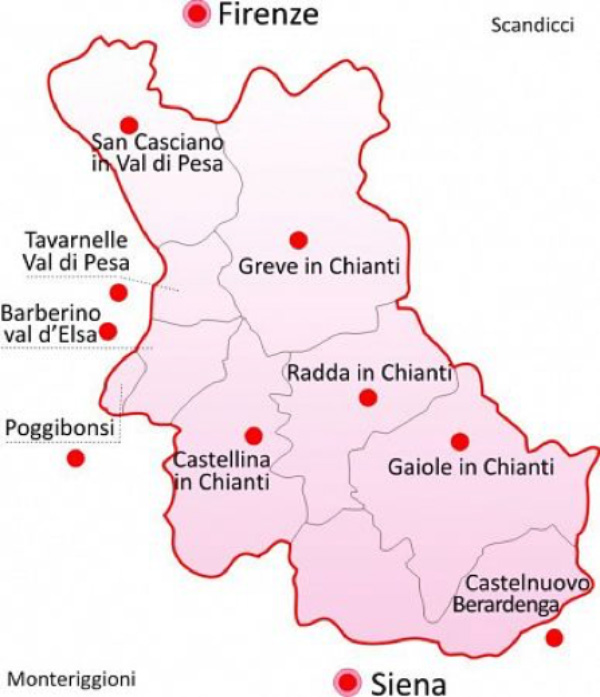THE WINEMAKING CHIANTI AREA TODAY
In August 1924, within the walls of the Fattoria Vignale – that at the time was the manor house belonging to a Notary Public, Mr. Baldassarre Pianigiani, known as “the Chianti Notary“ – the ‘Gallo Nero’ certificate of incorporation was drawn up. This is a consortium set up to protect the local Chianti Classico wine and the Relais Vignale is its historical centre.
The “capital” cities of the Chianti Classico Region are Florence and Siena and the ‘Gallo Nero’ area stretches over the two districts: 70,000 hectares that include the municipalities of Castellina in Chianti, Gaiole in Chianti, Greve in Chianti, Radda in Chianti and, in part, also Barberino Tavarnelle, Castelnuovo Berardenga, Poggibonsi and San Casciano in Val di Pesa.




